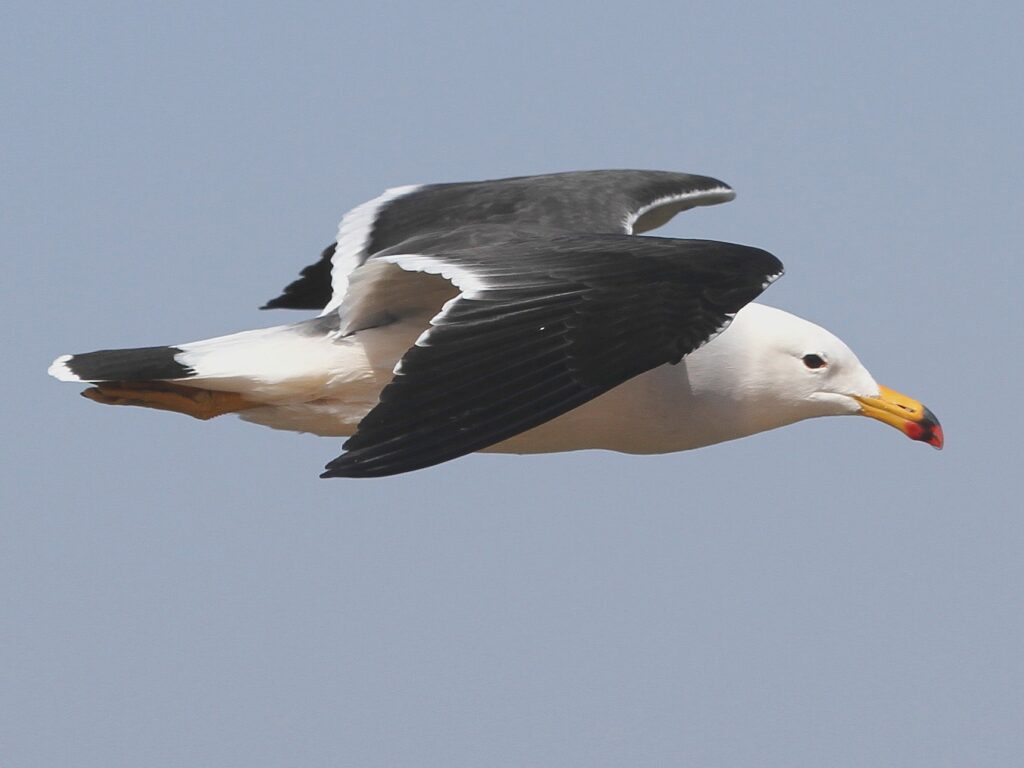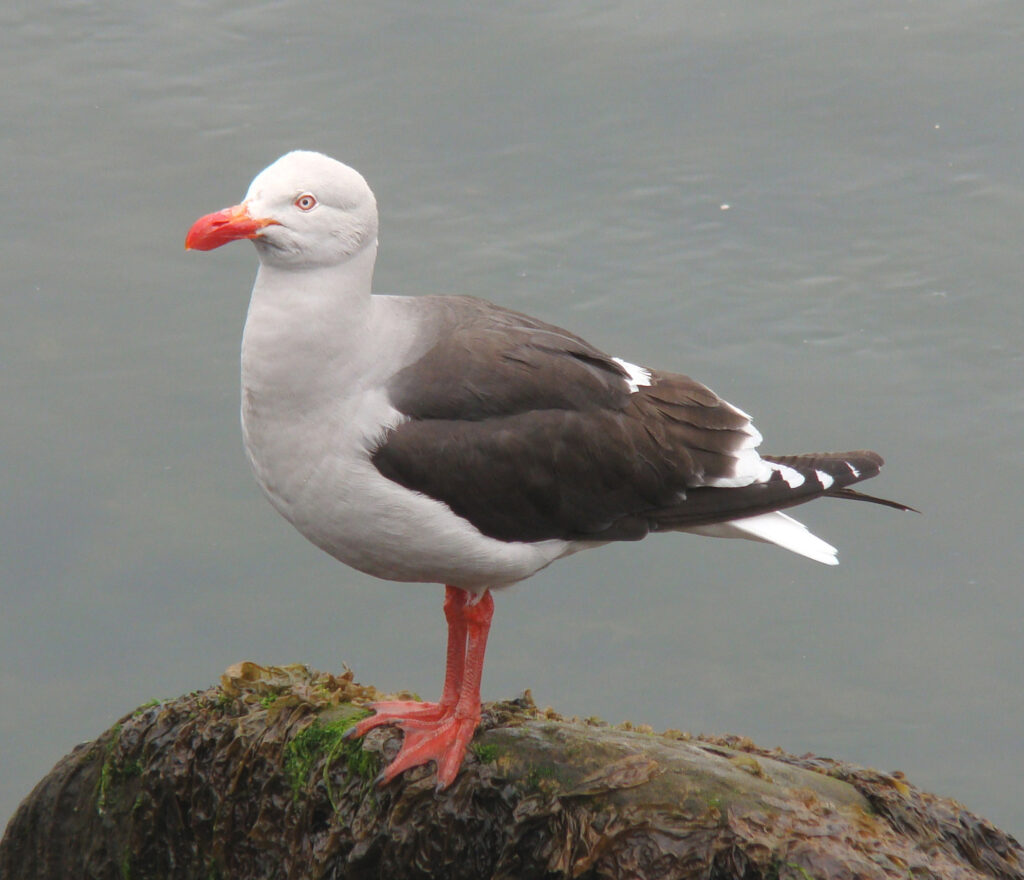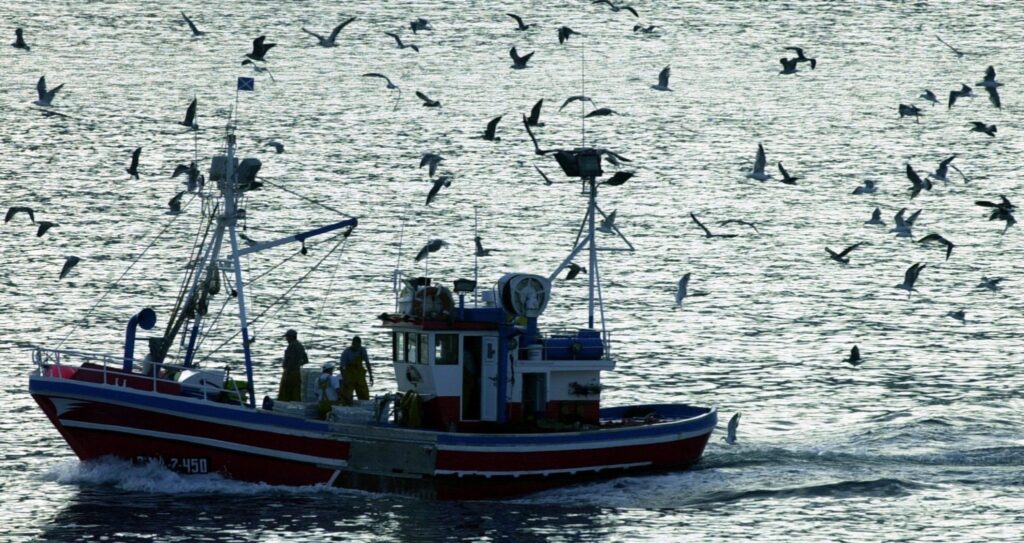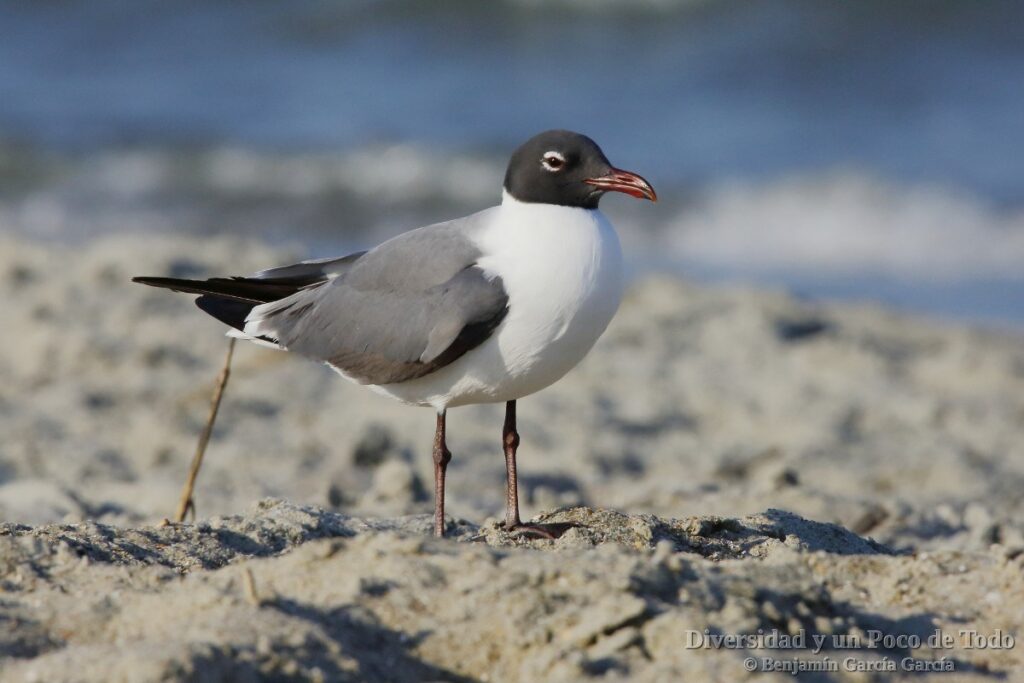The Seagull is a bird of great presence and popularity on beaches and docks. It is recognized by its white coloration and yellowish legs. There are species that can calmly approach humans, and even steal their food, which shows their enormous ability to adapt quickly to new situations. To learn more about these birds, we invite you to continue reading this article.

Seagull
The seagull is classified within the family Laridae, of the order Charadriiformes. It is common to find it near the coast, since this is the habitat to which it is accustomed. They have always formed numerous groups of birds of the same species. They manage to communicate with each other through a long, high-pitched cry.
They exhibit a white color and rise to considerable heights to spot their prey in the sea, or to protect themselves from predators. It is common to see these birds interact with humans and be curious about the elements that surround them, since these creatures are very intelligent and ingenious.
They are usually in constant movement, so they do not have a fixed habitat, so they can be found scattered anywhere on the planet, with the exception of desert regions, tropical climate jungles, the islands that are located in the center of the Pacific Ocean and at most sites in Antarctica.
Certain species share their habitat with animals such as the Emperor or Antarctic Penguin. They can always be seen flying around fishing boats, from which they can get food and usually sleep in very high places to avoid their predators.
Features
The plumage of the seagull exhibits the colors white, black and gray, which are combined with each other throughout its body. Its legs are yellow and its long beak is the same color, serving as its most important tool for hunting and defending itself.
It can reach a height of 80 centimeters and a weight of 1.8 kilograms, which varies according to the species, since there are smaller birds within the gull family. Their wings get wet without affecting their flight, since they are adapted to the coastal environment.
What does a seagull eat?
Gulls usually feed on fish and crustaceans. To do this, they use fishing or carry out an attack from above to catch their prey. That method consists of rising as high as they can and dropping down to capture them easily (we can define this as their hunting technique).
However, seagulls have the ability to feed on anything they can get their hands on. This includes vegetables and meat from carrion (decaying animals), rodents, or any animal you can get your hands on from shore. These birds are considered as "ravagers" of environments since they move in groups made up of numerous specimens that, together, can gobble up most of a school of fish.
How much do you eat?
The amount of food that a seagull can consume depends on its weight, being able to ingest only a third of it. Like all birds, it has a crop in which it can store food for those long trips. Or in case it does not get food for many days, which a very far-sighted and intelligent animal usually does.
Gulls very occasionally experience periods without feeding. It has the ability to adapt its diet from marine to terrestrial, being able to feed on any prey that is smaller than them, and that is easy to swallow. One of its curious characteristics is that it can feed on carrion, so it can take advantage of the carcasses of whales or sharks as long as they are on the shore or provide an appropriate support so that they can perch on it to eat.
How long they live?
Gulls in their natural environment can live up to 10 years. In captivity they can exceed 20 years of age. These birds face problems to live beyond the first year of existence since they are easy prey for predators such as sharks, foxes, weasels and even cats.
When they overcome that first year, their longevity increases thanks to the fact that they form a group so as not to be caught when they are looking for food. Throughout their lives they have the habit of forming a single couple and when it comes to reproducing, the female lays 2 to 3 eggs in the previously built nest.
Where does the seagull live?
Gulls can be found on all coastlines of all continents, with the exception of Antarctica. They are adapted to live in the vicinity of rivers and on the shores of the seas, placing their nests as far from the ground so that their predators cannot reach them.
They gather in huge groups, as we mentioned previously, which increases the possibility of repelling the attack of their predators to prevent them from trapping their companions and the species from being reduced. This collective defense is due to the fact that the seagull is a very intelligent bird, which demonstrates sociability with its own species and forms a very solid social structure.
Threats
Currently they are usually threatened by different factors, one of which is the yellow-legged gull, which is a larger species that is very aggressive towards those with whom it shares its habitat. This gull makes its nest a month before the Audouin's gull, so there are problems for the nest site, since the yellow-legged gull becomes dangerous when it wants to catch the eggs and chicks since it regularly does so while feeding to their chicks.
Another threat is tourism, since due to the existence of islands near their habitat, many boats visit them frequently and whose piers alter their ecosystem by not having their resting places properly disposed of. The fishing boats, for their part, throw their nets into the sea in areas where the seagull usually eats, and they can get caught in them and get hurt or perish.
Species
Gull species differ in their physical traits and in the diet they eat on a daily basis. The latter is closely related to the area in which they are located, since each of these areas has a different kind of climate, fauna and flora, as well as predators for whom they serve as prey.
- American Gull
- Southern Gull
- Bonaparte's Gull
- Maori seagull
- Andean Gull
- Atlantic Gabion
- Silver Gull
- Yellow-legged Gull
- Garuma Gull
- Galapagos Gull
- caspian gull
- Black Headed Gull
- Audouin's Gull
- Common Gull
- Franklin's Gull
- Kelp Gull
- Olrog's Gull
Although this list is already quite extensive, they are just some of the numerous species that comprise the various families of gulls. The fact that this bird can be located in most of the continents, and in any coastal site from which it can obtain enough food for its maintenance, results in the number of its species or families related to them being enormous.
Curiosities of the Seagull
- In addition to fish, it feeds on the eggs of other birds.
- They steal food from other birds
- They use calls and body language to communicate with each other
- They are highly sociable
- Seagulls can also be seen alone
- Their nests are not very deep and are made with vegetation.
- They do not move away from the shore of the beach
- They cannot rise in the absence of wind
- Although they are coastal birds, they cannot dive
- They stand on whales to peck at their skin and eat it.
- Their eggs hatch in 26 to 28 days.
- They regurgitate food to feed their young.
- A seagull's nest is never left alone to prevent predators from approaching
- Both males and females care for their young equally.
- They are related to wading birds, such as storks
- Gulls can feed on small chickens
You may also be interested in these articles:




